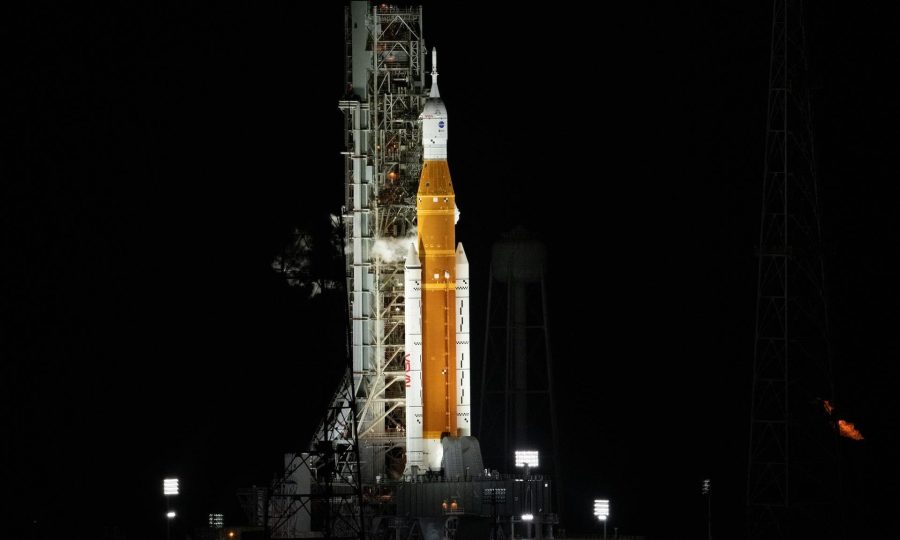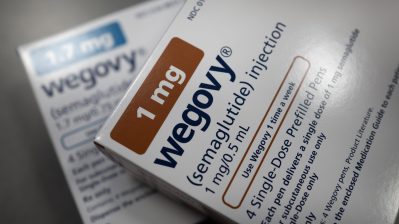Among the goals of Artemis I: launching the lunar economy (re-air)

Earlier this month, the highly anticipated launch of the Orion spacecraft finally happened at NASA’s Kennedy Space Center in Florida.
The lift-off of that unmanned rocket was the first of a series in the agency’s Artemis missions, which aim to eventually establish a long-term human presence on the moon’s surface to begin building a lunar economy, including extracting precious metals and minerals to send back to Earth.
But before sending humans, the agency has to test complex rockets, heat shields and life-support systems.
And speed is of the essence. The U.S. and China are in a new space race to get humans to the moon.
On this Thanksgiving holiday, we’re revisiting a conversation with Peter Garretson, a Senior Fellow in Defense Studies at the American Foreign Policy Council.
He spoke with Marketplace’s Kimberly Adams about how the stakes are different this time around.
Peter Garretson: So our efforts to go to the moon this time are not really principally about signaling to a global audience our relative technological prowess. This is principally about pursuing economic hard power and advantage about who will have preferential access to the jobs of the future, to the economy of the future. And the moon is absolutely central to that incorporation of the inner solar system into the Earth’s economic sphere because it’s close, because it has low gravity, because it is resource rich. And of course, if a foreign power can limit your access to resources, like on Earth you can see Russia limiting access to natural gas for Europe, you lose national security in that exchange.
Kimberly Adams: What kinds of industries do you imagine being set up on the moon to create that economic engine?

Garretson: The very first thing that you’ll see are going to be industries that support civil spaceflight itself. So you’ll see the early attempts to use the vast Great Lakes’ worth of ice in the lunar south pole to get water. Water that can sustain astronauts and reduce the logistics load to the moon. Water that can be turned into hydrogen and oxygen and that can be used for rocket fuel. And then you’ll start to see metal production, and that metal production probably will initially be to help sort of set up and support lunar base operations for industrial processes.
Adams: This project is projected to cost something like $93 billion for U.S. taxpayers, more than expected as many programs, like this, end up running over. Why does the government think this is worth the cost right now?
Garretson: I think at the core of it is great power competition. It is the concern that if we allow China to continue moving at its pace without, you know, increasing our own efforts, that would have hugely detrimental effects if the United States ceased to be the lead actor and the benefiting economic actor in that domain.
Adams: Who then controls who gets to have access to resources on the moon?
Garretson: Right now, the United States and China are both a party to the Outer Space Treaty. And the Outer Space Treaty essentially says that the moon and space are free to access by any nation. And of course, the moon is quite big, though, perhaps not everything that everyone would want on the moon is equally available. The Outer Space Treaty was basically a gentlemen’s agreement among nations that has extremely weak enforcement. And as long as both sides choose to play by the rules, then it’s a very cooperative game of you do what you want, we’ll do what we want and we’ll sort of act with due regard for each other’s interests. So, if the Chinese behavior in Antarctica, in their near seas abroad and the South China Sea and the East China Sea, are indications, then we have to be worried that China will use every effort to propagand[ize] this peaceful use of outer space, while in fact trying to do all the things they tried to do on Earth of corralling and controlling the resources.
Related links: More insight from Kimberly Adams
You can read more about all the stages of the Artemis missions online here.
And if you want to read more about the defense and national security aspects of this, the military news site Defense One has an article looking into that including more thoughts from Peter.
The Artemis 1 mission is more than just a test flight — it’s packed with actual experiments and projects that are impressive in their own right, like satellites mapping ice on the moon’s surface or a “solar sail’ heading for an asteroid.
Now, the eventual goal of all of this is to get humans to Mars, which explains why there also human-like mannequins on board the spacecraft. They’re there to help us better understand the effect of radiation on astronauts.
There’s one named Commander Moonkin Campos which will help test the space suits the explorers will wear. His name was picked by public contest, by the way.

And the Tampa Bay Times has a piece on Zohar and Helga — two mannequin torsos modeled after women’s bodies because women have a higher risk of breast cancer from radiation exposure.
NASA didn’t use special radiation protection on the Apollo missions because of the astronauts were in space such a short time. And back then the impact of radiation wasn’t studied on women astronauts because there simply weren’t any. This time around, NASA aims to change that.
The future of this podcast starts with you.
Every day, the “Marketplace Tech” team demystifies the digital economy with stories that explore more than just Big Tech. We’re committed to covering topics that matter to you and the world around us, diving deep into how technology intersects with climate change, inequity, and disinformation.
As part of a nonprofit newsroom, we’re counting on listeners like you to keep this public service paywall-free and available to all.
Support “Marketplace Tech” in any amount today and become a partner in our mission.

















